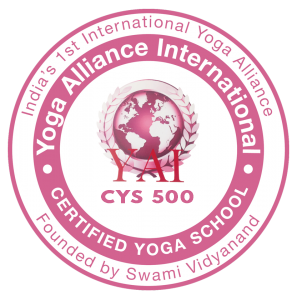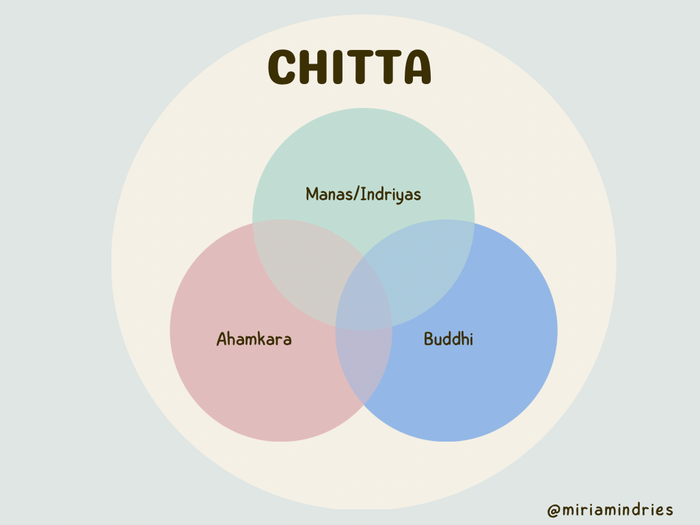Information



The Yoga Sutras of Patanjali provides clear information on what yoga is and its practices. As one of the most popular texts for yoga teachers and yogi aspirants who want to reach self-realisation, the Yoga Sutras is comprised in 4 different sections, each one offering information on the different levels and ways of practice, explaining clear methods and the outcome of it. Note that when I write practice, I refer to all the Raja yoga practices, not just asana.
Amongst all definitions of Yoga, one of the most popular and clear (in my opinion) is found in the Yoga Sutras text and it is the second sutra, in part 1. Sri Patanjali defines yoga as “Yoga Chitta Vrtti Nirodha” which can be translated as controlling or stilling the modifications of the mind. To put it in simpler terms, it can mean “Learn to control the thoughts and emotions which create disturbances and movement in the mind”. But how do these happen and what exactly is Chitta?
So first, we need to understand the word “Chitta”. It is not the mind, it is called the mind stuff or sometimes the heart mind. There are quite a few different ways it has been refered to, however we can understand that it is that which includes all the mental faculties. Chitta is the way we are able to function and be present in the external world and experience both the external and the inner world. The faculties that come under it are manas (the mind) and indriyas (the sense organs), Buddhi (the intellect) and Ahamkara (the ego). It is through these that thoughts and emotions (vrttis) are created, processed and acted upon depending on the balance between these each individual has.
It is also useful to briefly introduce to you the gunas. In Samkhya philosophy (which is one of the major Hindu philosophies from which yoga philosophy has much influence) the gunas are presented as the three qualities of everything that is manifested in material form. So anything that comes as material existence is said to be in one of these three states, constantly interacting with one another, changing and fluctuating. The concept of gunas is used in Ayurveda also. The three gunas are tamas (darkness, laziness, dullness etc), rajas (active, movement, restlessness) and sattva (calm and serene, the highest state).
In one of the Yoga Sutras versions with commentary by Swami Vivekananda, he provides information on the three states of chitta based on the gunas. These can change for an individual depending on their practices and behaviours, habits, learned mental patterns, emotions, moods etc.
1. TAMASTIC STATE
The first state he describes it as tamastic. In this state, there is darkness, dullness and no good action that stems from the faculties of chitta. A tamastic state of mind can also be considered as lazy and sluggish. In another way, it can also be seen as a state in which actions that are influenced by this state bring darkness, no good deeds, or even unkind thoughts and actions towards one self and others. Tamas can also represent like a low vibration state.
2. RAJASTIC STATE
The second state mentioned is the Rajastic state, which refers to activity. In this state of chitta, there is desire of power and the seeking or experience of pleasure or pain. When there is desire, there is always an outcome for it which enhances the hunger for our reason of the desire. Usually this is for pleasure. We desire something to feel good from which leads to empowerment/feeling powerful. But desire can also bring pain if the object of seeking is not reached. Even when it is reached, we continue to seek outward for the pleasure, which ultimately leads to pain/suffering because the cycle of constant chase for true joy and knowledge of the Self is not received from the external world. Rajastic state can also refer to one who is very driven and determined, seeking success, power, fame etc. It is the state when the mind is very active.
3. SATTVIC STATE
The third state of chitta Swami Vivekananda mentions in the commentary is the sattvic state, which is calmness. The thoughts are still there, but mind is no longer overpowered or distracted by these or anything else. A state of serenity is easy to understand but much harder to practice. This is because the mental faculties continue their functioning at all times. Unless we completely shut out from the external world (which is not the message of yoga), however even then we will have the internal world to face. We cannot stop the mind from thinking, this is its job. But we can learn to be in a state of awareness without reaction to thoughts. And eventually, through the commitment to our Sadhana/spiritual practice application in our life, the mind becomes more calm and more clean of these impurities.
Therefore a sattvic state is considered as having a pure mind. It comes with no judgement or desire, no seeking for anything. This is not to be confused as laziness or ignorance. A sattvic state is one in which the desire is not there because inner peace has been experienced. And when one attains true inner peace and joy, they don’t need to achieve anything for it and understand this is not something that can be received or experienced from the external world.
This is (in my opinion) what yoga ultimately teaches us. It does not mean to learn to control or ignore unkind thoughts or a burning desire for something, or replacing laziness with productivity etc. It is about living in wisdom, which is the real test of practicing yoga in our day to day life. When we sort out through all our mental faculties and learn how to create a state of balance and peacefulness through this experience we call life, then love will be the only experience we have and give to the world. Therefore, in this state, even the faculties although still functioning, still doing their job, are in a state of peacefulness and harmony.